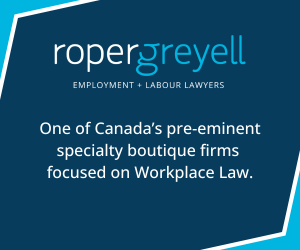Are You Brave Enough for Managerial Courage?
By Heidi Eaves
When you work for someone else, sometimes your values match those of the company and its leaders—and sometimes they don’t. Depending on your level of seniority, you might also be impeded by a lack of control over priorities, deadlines, hiring, or projects.
All of this can make it feel like you don’t get to make the decisions you would make if you were “in charge.”
A Work in Progress
No matter how much control you have over your surroundings, you still choose how to behave. You can always make the decision to stand up for what’s right, carry yourself with grace, and be honest and transparent. Granted, this can be hard work, especially if you need the job (and who doesn’t).
Moreover, even if you are constantly striving for a level of managerial courage as a leader, it can feel like a work in progress. One daily goal to help you get there is to behave in a way that you can be proud of, and that can be reflected in how you partner and communicate, as well as in what you accomplish.
Of Courage and Brave Leaders
The term “managerial courage” was really borne from a need for brave leaders in the workplace: a willingness for a manager to stand up for what’s right, have their team’s back, refuse to sign up for an impossible deadline, or admit they don’t have all of the answers.
As a result, managerial courage requires being willing to risk being unpopular for the right reasons. It means being straightforward with employees about their behaviour and other people’s perceptions of them, and letting them make choices about whether to change, leave or tough it out.
When you are in the thick of a management career in a tough industry, you can sometimes struggle to do the right thing. You can feel pulled between conflicting priorities and duties: meet the deadline, stay within budget, get more out of people, add features, change things on the fly, create fewer bugs, mitigate risk—now do it faster and don’t forget to innovate and improve quality!
Through it all, your team needs strong and clear direction, vision, and goals. They want a healthy workplace, opportunities to do their best work, time to learn and grow their skills, hone their craft, and contribute. Knowing which priority to follow and which to ignore, and how to lead through this chaos, can present a huge challenge. The more senior you become, the clearer it can become that the need for bravery and honesty is paramount.
Failing is Learning in Action
Failures in courage can teach some big lessons. Once, I was asked to terminate an employee who didn’t report to me and whose performance was unknown to me directly. My job was to walk him to the HR manager and sit with him while she delivered the message.
I was uneasy about this, as it was a long walk to the HR manager’s office, and the employee didn’t know where we were going at first, or why. It felt terrible and wrong to bring him to a meeting in that way, and to watch it dawn on him as we approached the HR department that he was probably being fired. To make matters much worse, the HR manager was late to the meeting, so the employee and I shared a very painful ten minutes, with him asking me what was going on, and me (obedient junior manager) telling him that I wasn’t allowed to say, but that HR would be there soon.
By the time the HR manager finally arrived, he was in tears, and I wasn’t far behind. I will never forget the feeling of choosing to not tell him what was going on, because I was afraid of getting into trouble. I have held countless termination meetings since then, and each time I think of that experience, and I strive to be kind and respectful, honest and clear, and on time.
Courage Makes the Difference
It is difficult to be courageous when the pressure’s on and you’re feeling the squeeze between what the company is asking for and what your employees need. Every so often, you have to say no and stick up for something—a person, a project, an idea—that deserves to be protected or celebrated, even when no one else will speak up.
When the moment arrives, be ready. Be clear about the costs to quality with a deadline your team can’t hit. Refuse to hire a candidate who looks great on paper but who you know will be a bad fit. Be willing to let someone go if they have no place on your team, even if you like them. It’s inspiring to watch a great manager who models this behaviour, and while they might occasionally get in trouble for it, it is clear that they feel the risk is worthwhile.
Doing the Right Thing
This isn’t about digging in your heels when you don’t get what you want, or when the going gets tough. It’s about doing the right thing, striving to make your environment better, speaking up for the greater good. It’s about integrity, celebrating other people, fighting for the best interests of your team, trusting and being trusted.
It’s about not holding on to information just because it makes you look important. About not treating employees like children and then being upset when they act childishly. It’s about being vulnerable and kind. Finally, it’s about believing that professionalism and compassion can co-exist, and striving to prove it every day.
Heidi Eaves is a senior human resources professional with 20 years of experience in the software development and biotech industries. She was a senior development director at Electronic Arts Canada, where she worked for ten years, and she has considerable experience in HR, product development, and project delivery. She is also highly experienced and adept at building and maintaining high-performing teams.








